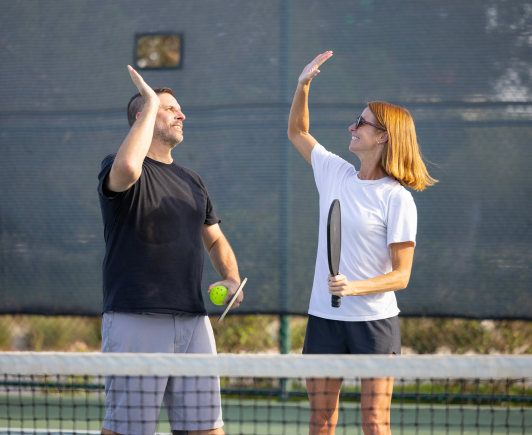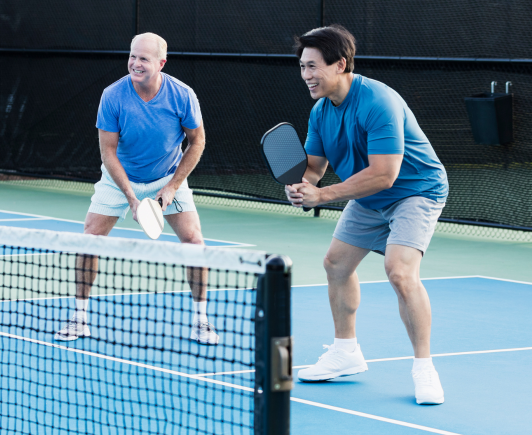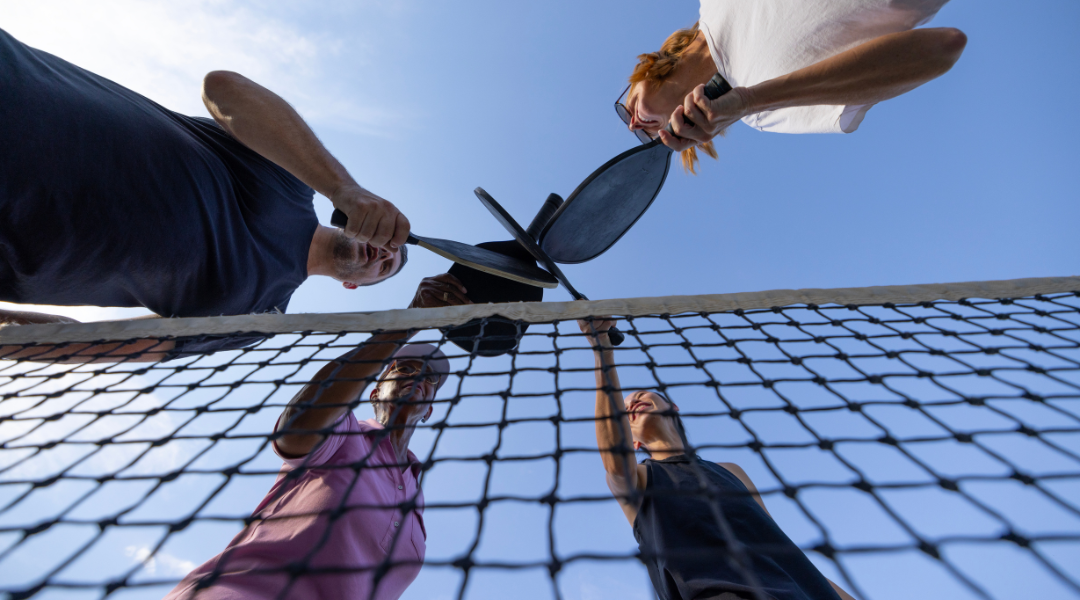Pickleball is a paddle sport that blends elements of badminton, tennis, and table tennis, and it has become increasingly popular because it’s enjoyable and accessible to players of all ages and skill levels. If you’re new to pickleball, learning the basic rules can significantly improve your playing experience. Let’s explore the fundamental rules of pickleball to help you get started.
The rules of pickleball are generally based on two main objectives: 1. To prevent any team from having an unfair advantage (for example, only the serving team can score points, while the receiving team cannot). 2. To maintain the game’s challenge by disallowing certain shots that would make winning points too easy, thus keeping the game competitive and engaging (like the non-volley zone rule).
Knowing these reasons can help to remember some of the more confusing rules.


A pickleball court measures 20 x 44 feet, divided into two sides by a net that stands 36 inches at the sidelines and 34 inches in the middle. The court is split into several zones:
The Non-Volley Zone (Kitchen): The area 7 foot from the net on both sides. Players cannot volley (hit the ball out of the air prior to the ball bounce) while stepping or standing in this zone.
The Service Areas: Each side of the court is divided into a left and a right service area by a centerline.
Ball: Pickleball uses a lightweight perforated plastic ball, similar to a wiffle ball, but slightly smaller.
Paddle: Pickleball paddles are larger than table tennis paddles but smaller than tennis racquets, made from various materials like wood, composite, or graphite.
Choosing the right weight is crucial in a pickleball paddle:
Service Motion: The serve must be hit underhand with the paddle below the waist, and the server’s feet behind the baseline.
Service Order: In pickleball, players serve diagonally across the court to the opponent’s service box. The serve must clear both the net and the non-volley zone (NVZ), including its boundary line.
In doubles play, the player on the right side of the court serves first during each turn. The serving side changes after each side out, depending on the position of the players when they lost the last point that led to the side out. If players are using a stacking strategy, they must return to the appropriate side of the court where they technically belong.
In singles play, after a side out, the player resumes serving from the side where they ended their previous serving turn. A simple rule to help remember serve positioning is: if your score is even, you serve from the right side; if your score is odd, you serve from the left. The player returning the serve stands diagonally opposite the server.
Double Bounce Rule: The ball must bounce once on each side before volleys are allowed. This means the serving team must let the return of serve bounce before hitting it, and the receiving team must do the same prior to returning the serve.
Points: Points can only be scored by the serving team when they win a rally. Games are typically played to 11 points and must be won by a 2-point margin.
Keeping Score: The score should be called before each serve in the order of the serving team’s score, the receiving team’s score, and the server number (1 or 2 if doubles).
Volleying: Players must let the ball bounce once before hitting it on the serve and the return. After these initial bounces, players can either volley the ball in the air or play it off a bounce.
Faults: Faults occur when the ball is hit out of bounds, does not clear the net, is volleyed from the non-volley zone, or is hit before a bounce on the first two shots of a rally.
Pickleball is known for its friendly and social nature. Common courtesies include:
Pickleball is an engaging sport that’s easy to learn but can take time to master. With these rules in mind, you’ll be well on your way to enjoying and competing in this fun and social game. Grab a paddle, find a court, and start playing. You’ll find that pickleball isn’t just about the points—it’s about the joy of the game.

IPTPA Master level pickleball pro, aiming to enhance the skills of players globally by making the game more enjoyable, effective, and fun.
